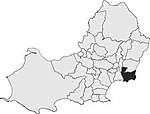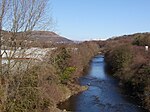Maesteg House
Buildings and structures completed in the 1840sBuildings and structures in SwanseaHouses in SwanseaManor houses in Wales

Maesteg House was a manor house built on the south slope of Kilvey Hill, Swansea. It was built in the mid 19th century by the copper and tin industrialist Pascoe St Leger Grenfell. The building is no longer there, as it was demolished shortly after the First World War to make way for new housing development.
Excerpt from the Wikipedia article Maesteg House (License: CC BY-SA 3.0, Authors, Images).Maesteg House
Grenfell Park Road, Swansea Port Tennant
Geographical coordinates (GPS) Address Nearby Places Show on map
Geographical coordinates (GPS)
| Latitude | Longitude |
|---|---|
| N 51.62452 ° | E -3.92863 ° |
Address
Grenfell Park Road
Grenfell Park Road
SA1 8EZ Swansea, Port Tennant
Wales, United Kingdom
Open on Google Maps







